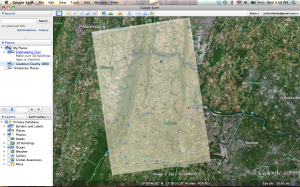I’d never heard or seen a Feltron Report before, so as I opened the 2008 Report, I was surprised, impressed, inspired, and amazed. Nicholas Felton, the creator of the Feltron Reports, was fascinated by charts and data, and one day decided to keep track of his life statistically. Everyday he’d record what he did, when he did it, how long he did it for, etc. until his entire year was able to be put into numbers. Music, travel, food, photos, and tons of minute details were apart of his annual reports, which he has been doing since 2006. All these reports are available online to be viewed by anyone who wants to know everything about his life, or to be amazed by the lengths to which he’ll go to write them.
As I looked at the Feltron Report for 2008, I was immediately drawn to the design of it. Being a graphic artist of sorts, the Feltron reports are visually stunning, with a lot of care put into the colors, graphs, maps, and charts that are easy to understand and stimulating to look at. 2008 for example is mostly grey, with white and lime green accents that make the data pop out. The only exception to this is the map/atlas, which seems like a jumbled mess of triangles until you view it up-close. The 2006 Report is better at this, with his maps of Manhattan being very easy to read with the black dots contrasting great on the yellow background. However, the 2006 Report does show how far Felton has come in graphic design, with the visual differences between the two years very apparent; 2008 looks a lot more professional and entertaining.
One thing in his reports that caught my eye (2008 especially) is the music section, in which he tracks the number of songs he’s listened to, how many artists he’s played, the number of CDs he’s bought, and even a percentage breakdown of which artists made up his top 10 most played. As an avid music lover, this part more than any inspired me, and even gave me a few ideas of doing something similar with my music in the coming year. The amount of dedication it would take (and took Felton) is pretty staggering to just think about though, not to mention actively keeping track of all that data. And that’s just for music, not even everything else he records. The amount of work Felton puts into his reports is incredible, and has made viewing statistics interesting and fun, something that’s not easy to do. It’s weird to think that our lives can be broken down into a few pie charts and maps, and that everything we do can be simplified into a percentage. The Feltron Reports give light to the fact that our very lives are a science, something that can be dissected and studied; which when going about them, we never even have the thought cross our minds.


